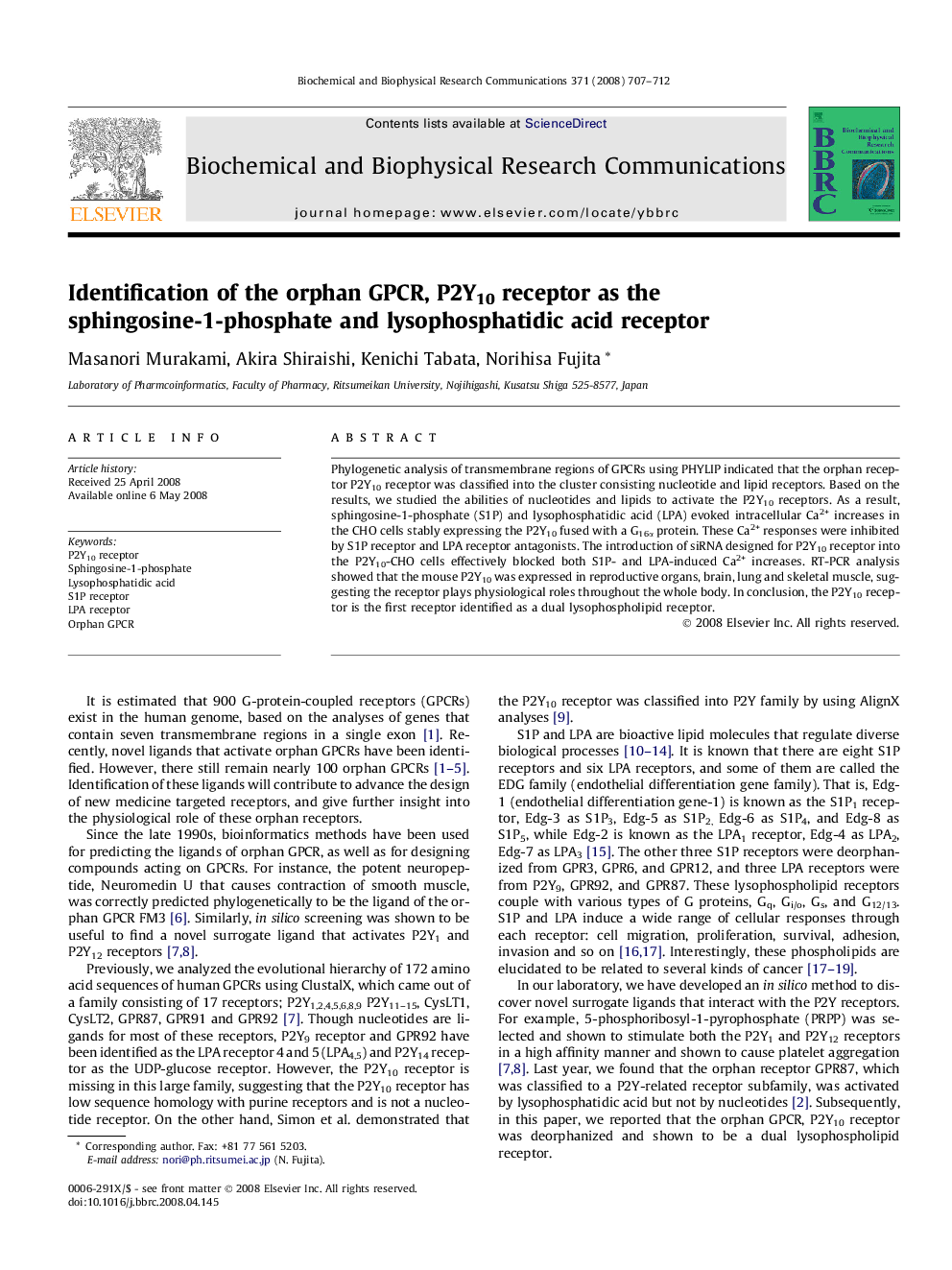| Article ID | Journal | Published Year | Pages | File Type |
|---|---|---|---|---|
| 1935176 | Biochemical and Biophysical Research Communications | 2008 | 6 Pages |
Phylogenetic analysis of transmembrane regions of GPCRs using PHYLIP indicated that the orphan receptor P2Y10 receptor was classified into the cluster consisting nucleotide and lipid receptors. Based on the results, we studied the abilities of nucleotides and lipids to activate the P2Y10 receptors. As a result, sphingosine-1-phosphate (S1P) and lysophosphatidic acid (LPA) evoked intracellular Ca2+ increases in the CHO cells stably expressing the P2Y10 fused with a G16α protein. These Ca2+ responses were inhibited by S1P receptor and LPA receptor antagonists. The introduction of siRNA designed for P2Y10 receptor into the P2Y10-CHO cells effectively blocked both S1P- and LPA-induced Ca2+ increases. RT-PCR analysis showed that the mouse P2Y10 was expressed in reproductive organs, brain, lung and skeletal muscle, suggesting the receptor plays physiological roles throughout the whole body. In conclusion, the P2Y10 receptor is the first receptor identified as a dual lysophospholipid receptor.
